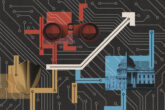November 07, 2024
Controlling the danger: managing the risks of AI-enabled nuclear systems
Recent developments in artificial intelligence (AI) have accelerated the debate among US and European policymakers about the opportunities and risks of military AI. In many cases, this debate is an attempt to answer four simple questions with murky answers: what are the military advantages of AI? What are its risks? How can we balance the risks and opportunities? And how do we prevent these risks from devolving into a greater crisis? This paper deals with one of the risks: the further integration of AI and autonomous tools into the nuclear command, control, and communications (NC3) networks of nuclear-armed powers. I start by outlining some of the ways AI has previously been used in NC3 systems, then examine the risks that these systems pose, and finally offer some solutions that the international community can deploy.
Read the full article from the NATO Defense College.
More from CNAS
-
Technology & National Security
AI Is Changing Everything CISCOs Need to KnowIn this episode of The Cyber Circuit, Michael Morgenstern sits down with Caleb Withers from the Center for a New American Security (CNAS) to unpack his recent report "Tipping ...
By Caleb Withers
-
Transatlantic Security / Technology & National Security
Look Before We Leap on Artificial IntelligenceThis article was originally published on The Dispatch. A debate about the role that artificial intelligence should and will play in society, and how it will affect humanity fo...
By Jon B. Wolfsthal
-
Technology & National Security
Caleb Withers on the Cybersecurity Frontier in the Age of AICaleb Withers, research associate at the Center for a New American Security, joins Kevin Frazier, the AI Innovation and Law Fellow at the University of Texas School of Law and...
By Caleb Withers
-
Technology & National Security
Prepared, Not ParalyzedExecutive Summary The Trump administration has embraced a pro-innovation approach to artificial intelligence (AI) policy. Its AI Action Plan, released July 2025, underscores t...
By Janet Egan, Spencer Michaels & Caleb Withers




